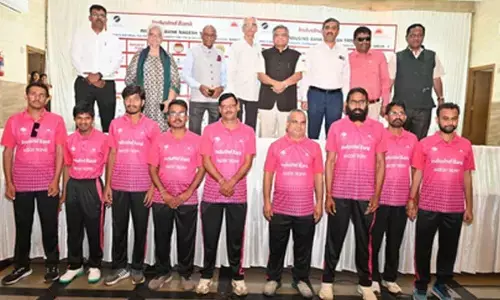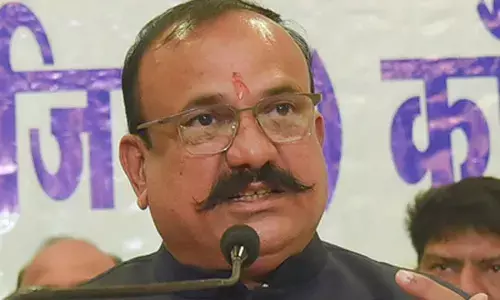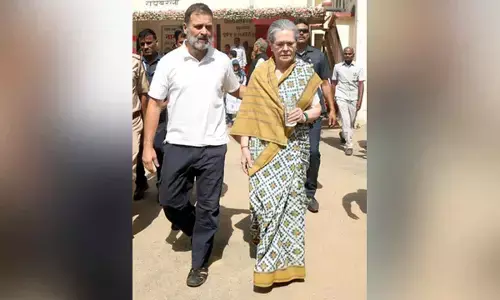Polavaram shows how tribals are worst victims of development

Polavaram Shows How Tribals Are Worst Victims Of Development. Tribal people have become the biggest victims of “development” for several reasons – lack of numbers and political voice in a democracy run on a first past the post ballot being foremost.
Tribal people have become the biggest victims of “development” for several reasons – lack of numbers and political voice in a democracy run on a first past the post ballot being foremost. They have been scattered and unorganized and thus unable to employ their votes as a weapon of change. The fact that Dalits and other backward classes with no pan Indian leadership have grown from their ranks has added to their woes in a centralised majoritarian democracy.
.jpg)
They constitute just eight percent of country’s population but almost 50 percent of the total number of people displaced for different development projects since independence. The estimates for the 1951 to 1990 period put the total number of displaced Indians at 21.3 million, a whopping 8.54 million of them were tribal. The trend has merely accelerated with the opening up of Indian economy in the 1990s with estimates pegging the total number of displaced people at 60 million, with tribal people being the worst affected.
The only thing worse than the displacement is the government’s track record in rehabilitating those affected. Between 1951 and 1990 only 2.12 million of the displaced 8.54 million tribal people were resettled; the government abandoning the rest to swell the urban poor population of the country. As the resettlement policy of the government has not changed for any better, the numbers should give an indication of the fate of those displaced post-1990.
The fate of displacing tribal population under Polavaram multipurpose irrigation project on river Godavari in Andhra Pradesh is a classic example in this regard. The state and central government’s hurry with this project causing worry. The Hyderabad-based Human Rights Society, which constituted a fact-finding committee headed by retired High Court Judge A Gopala Rao, deplored over negligence attitude of both central and state governments over rehabilitation and compensation of affected tribal population. It has demanded that no further works should be take place till rights of the tribals are settled as per law.
It was found revenue records in village are fudged so that names of outsiders are replaced with the names of original tribal residents who will end up not receiving any rehabilitation package. Details of the rights of tribals living in the submergence area of the Polavaram Project, as enunciated by the Forest Rights Act, are not even documented, before which the tribals are being displaced.
The individual and customary traditional rights of the tribals have not been codified and gazette by the governments yet. Even before it is done, they are being displaced with a nominal compensation. In this regard, Justice Gopala Rao pointed out the following major lapses :
1. Tribals expressing concern that revenue records in villages are fudged so that names of outsiders are replaced with the names of original tribal residents, who will end up not receiving any rehabilitation package.
2. Details of rights of tribals living in the submergence area of the dam site, as enunciated by the Forest Rights Act are not even documented, before which tribals are being displaced.
3. Individual and customary traditional rights of the tribals have not been condified and gazette by the government yet. It may be recalled that details of the rights of each individual, his family, his community, lands under cultivation, and grazing lands need be documented.
4. The Supreme Court had directed the government in 2006 to constitute a monitoring committee. But it is yet to be constituted. We seek no further activity shall take place till constitution of such a committee. In the absence of such a committee, people are not having any source to express their grievances. For example, in Chegondapalli village a tribal nurse was died in a blast and her mother’s legs were broken. But till now no assistance was provided to their family and authorities even refusing to acknowledge such incident.
5. Though government is providing land to land, as such lands for cultivation are being given about 15 to 20 kms away from the houses being provided to them, that would pose problems for their livelihood. It should be ensure tribals to be provided houses close to their livelihood avenues.
6. Though rehabilitation package ensures providing livelihood avenues for all tribal youth aged about 18, till now no one provided such avenues.
7. The government till now not taking any steps to bring all rehabilitee areas under the preview of Scheduled areas, so that to ensure continuation of their rights.
The Supreme Court had directed the government in 2006 to constitute a monitoring committee, the Society expressed concern that it has not been constituted till now.
In the absence of such monitoring committee, the affected people are unable to represent grievances and no authority is coming forward to look into any lapses. For example, in Chegondapalli village a tribal nurse was died in a blast and her mother’s legs were broken. But till now no assistance was provided to their family and authorities even refusing to acknowledge such incident.
Some tribals were given farm lands about 15 to 20 kms away from the houses provided to them, it wonders how can they cultivate their lands from such distant place ? The pathetic site of tribal communities being displaced and their inhuman living conditions is part of record. All the right thinking democratic institutions and persons must remember that the contentious issue of Polavaram Dam is being discussed and rival contentions regarding the dam etc are being raised without recognizing the fact that the tribal communities have to leave their home land, agriculture field, mother forest for the sake of this dam.
Expressing severe concern over negligent attitude of the state and central governments over the fate of the displaced tribals due to construction of mega irrigation project at Polavaram on river Godavari in Andhra Pradesh, the Human Rights Forum has demanded that no further works should be take place till rights of the tribals are settled as per law.
The Forum demanded that details of the rights of each individual, his family, his community, lands under cultivation, and grazing lands should be documented along with traditional customary rights and boundaries of the community enjoyment areas. It should be done under the supervision of Grama Sabha, and the recommendations accepted by the government.
Recalling that the Supreme Court had directed the government in 2006 to constitute a monitoring committee, the Forum expressed concern that it has not been constituted till now. It demanded that such committee should be cosnstituted immediately after discussing with the local communities and the tribal organizations. Till this committee gives the clearance as directed by the Supreme Court, it said no further activity shall take place.
In the absence of such monitoring committee, the Forum felt the affected people unable to represent grivences and no authority is coming forward to look into any lapses. For example, it said in Chegondapalli village a tribal nurse was died in a blast and her mother’s legs were broken. But till now no assistance was provided to their family and authorities even refusing to acknowledge such incident.
Team members demanded that the government conduct meetings, interact with the gram sabha and local politicians, and preparing a road map based on mutual agreement and consent, before laying the next brick for the project. The issue of rehabilitation should be discussed by the State and Central governments within these parameters.
It sought that the package should be as per the directions by the monitoring committee, and if the package is found to be lagging in reference to the fixed benchmarks, construction should be deferred or stopped. In the interests of the rights of the project-affected families, the area of relocation should be declared as Scheduled Area, so that the protection and benefits of being Scheduled Tribes are not lost, .
Justice Gopala Rao deplored that the government has been revising project cost every time to benefit contractors, but keeps silence on rehabilitation packages. He said that funds for rehabilitation also should be increased as per requirements.
By Ch. Narendra, President, Human Rights Society

















